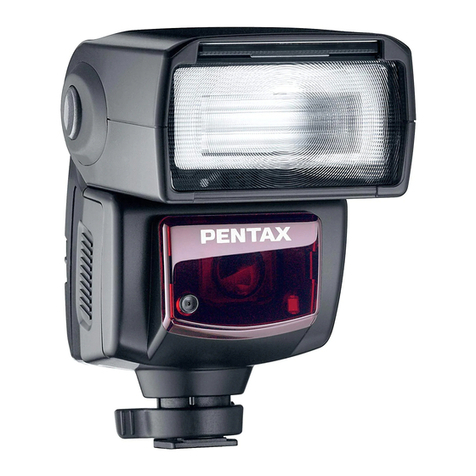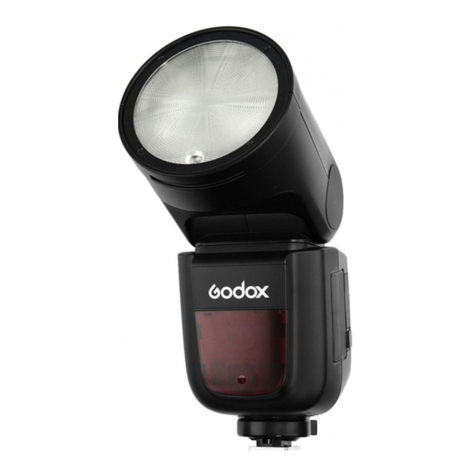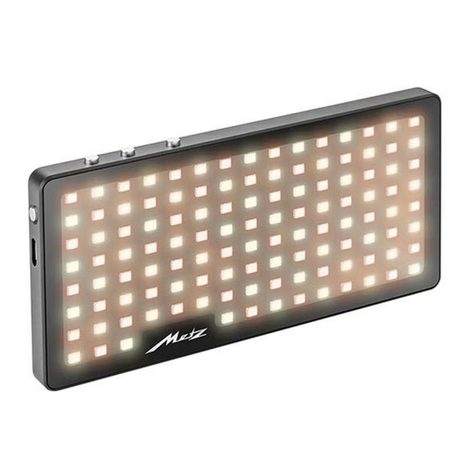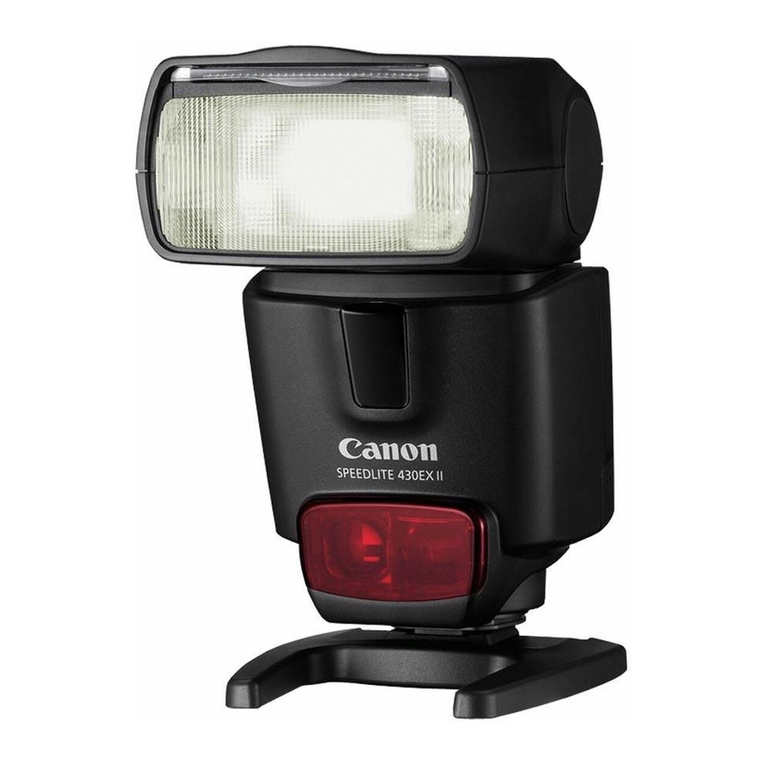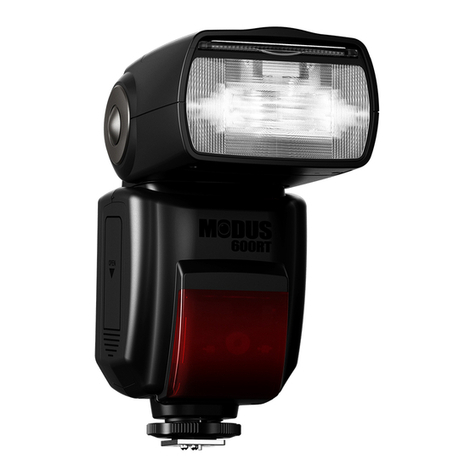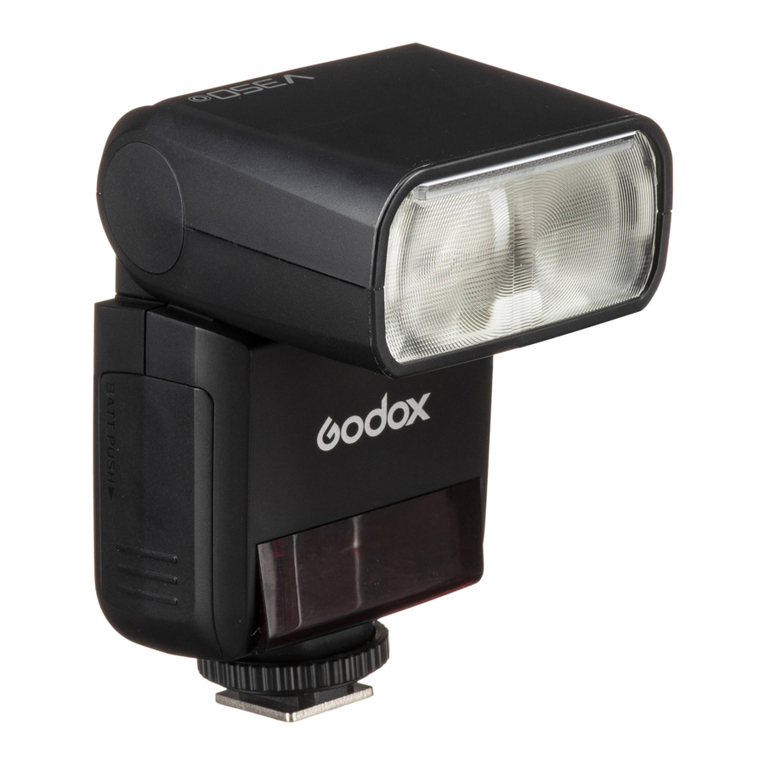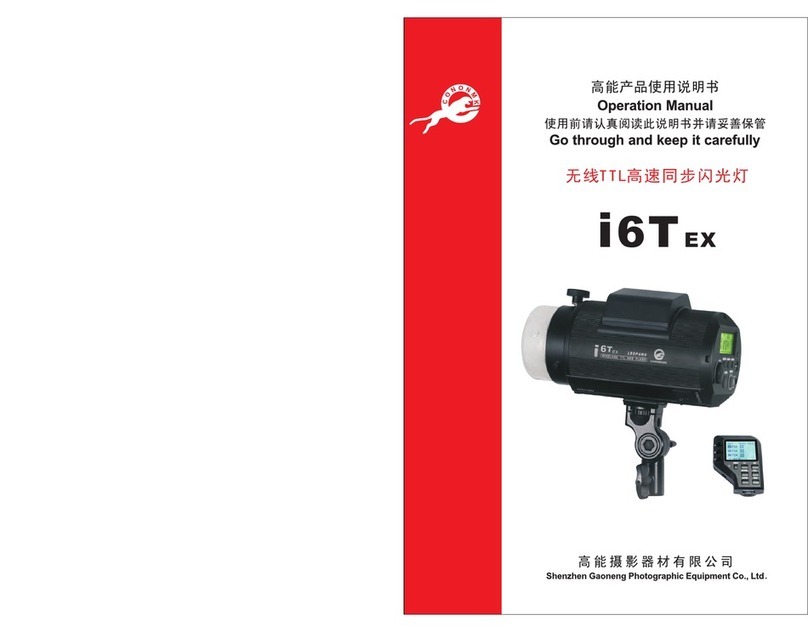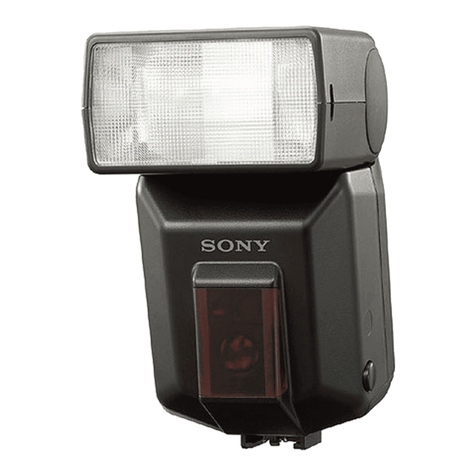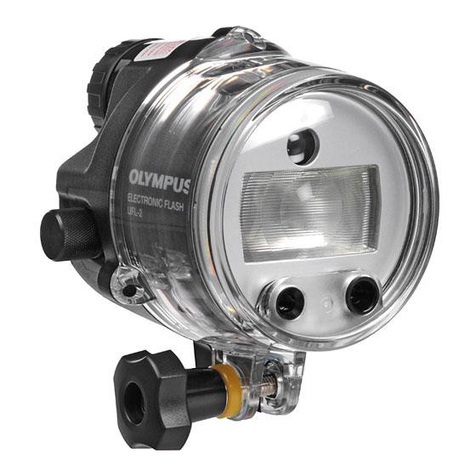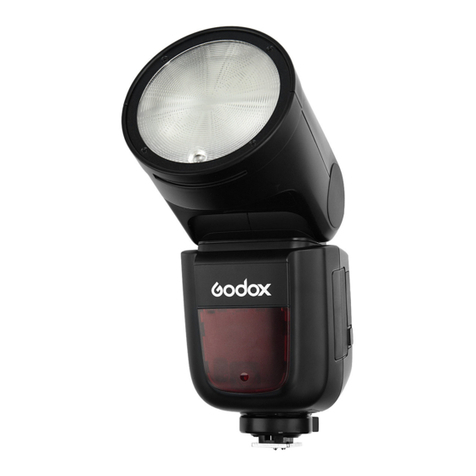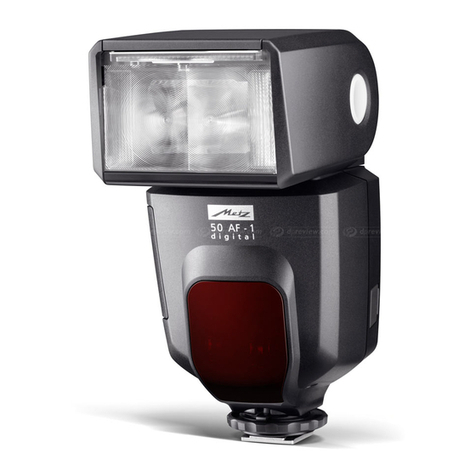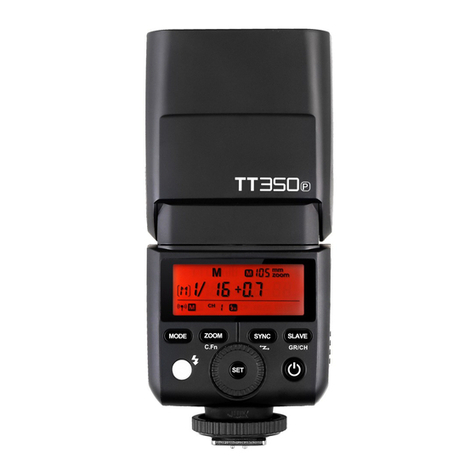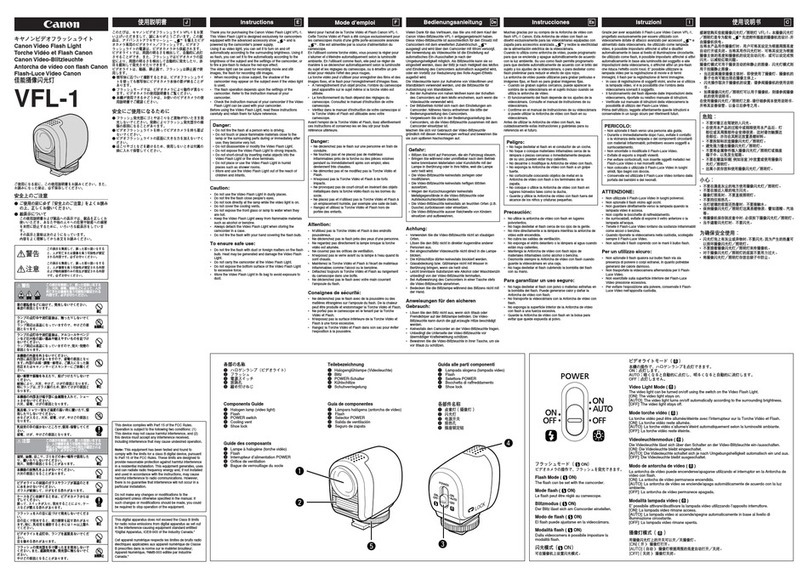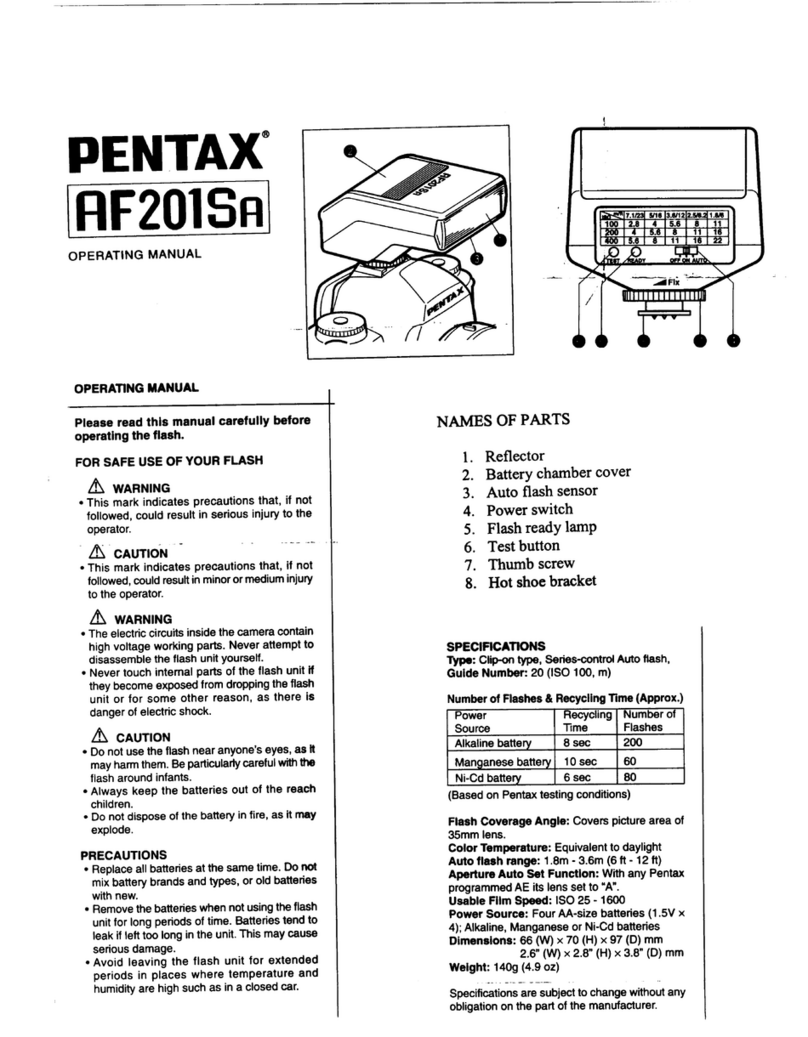RoboSHOOT MX-20, MX-15, RX-20, ad RX-15 User manual

RoboSHOOT +©
X Series
USER
MANUAL

Revision Sheet
RoboSHOOT+©User Manual Page 1
Revision Sheet
Rev
Date
Revision Description
2.0.1
2/18/2017
Initial Production Release
For Version 2.0.x firmware and
App. Feature addition: RX
Remote Shutter Release. Various
MX-15+and other corrections.
2.1.0
4/21/17
Version 2.1 firmware update.
Nikon supported on all units

Basic Operation
RoboSHOOT+©User Manual Page 2
TABLE OF CONTENTS
Before You Begin....................................................4
FCC Compliance ................................................ 5
EC Declaration................................................... 6
Industry Canada (ISED) Declaration .................. 6
Disposal recommendations .............................. 6
RoHS Declaration .............................................. 7
System Overview................................................... 8
Features ............................................................ 9
Master (MX) Devices....................................... 11
Slave (RX) Devices ........................................... 12
Getting Started.................................................... 13
Connecting the modules ................................. 13
Camera Settings .............................................. 14
Speedlight Settings ......................................... 15
Tips.................................................................. 16
Main Indicators ............................................... 17
Group Indicators ............................................. 18
External Ports.................................................. 19
Stand Alone Operation........................................ 21
Group Assignment on Slaves .......................... 22
Customization (MX-20+Only).......................... 22
Clear ................................................................ 22
Flash Test / Modeling Light ............................. 23

Basic Operation
RoboSHOOT+©User Manual Page 3
Enabling or Disabling Flashes quickly.............. 23
Flash Exposure Lock ........................................ 24
Button Lockout................................................ 24
Selecting a Profile............................................ 25
Profile Bracketing............................................ 27
Mult-Angle Photography................................. 27
Multi-Master Mode ........................................ 28
In-Camera Control............................................... 29
Basic Menu Mode ........................................... 30
Commander Menu Mode ............................... 32
In-Camera Control Considerations.................. 34
Focus Beam / Catch Light................................ 35
App Control ......................................................... 36
App Start-up.................................................... 37
Overview ......................................................... 38
Flash Groups ................................................... 40
Timer............................................................... 42
Intervalometer ................................................ 43
High Speed Capture ........................................ 44
External Trigger............................................... 46
Special Power-up Button Functions..................... 47
Troubleshooting .................................................. 53

Basic Operation
RoboSHOOT+©User Manual Page 4
BEFORE YOU BEGIN
- SAFETY -
Follow the Safety Guidelines provided as a separate document
carefully. The guidelines are provided for your safety, safety of
those around you, and for maximum enjoyment of your product.
If you cannot find the Safety Guidelines document, don’t
understand it, or otherwise decide not to read it do NOT use the
RoboSHOOT©devices. The guidelines may be available on the
Serene Automation website ‘www.sereneautomation.com’ or
may be e-mailed to you by contacting Serene Automation. For
your safety and proper care, review them periodically.
- EQUIPMENT CARE AND FUNCTION -
Be sure speedlights and RoboSHOOT©units are secured with
alignment pin engaged. Failure to do so may result in misfires,
intermittent operation, and/or drop damage.
Never pick up a camera or speedlight by the attached
RoboSHOOT©or other device. It could break free and cause
significant damage to your equipment.
- LEGAL -
We limit our liability for the purpose of keeping product costs to
a minimum and thus providing a cost effective product to you.
Use of RoboSHOOT©is at your own risk. By using or allowing
others to use this equipment you accept all responsibility and
absolve and indemnify Serene Automation from any liability
related to its use or misuse. If you do not accept this as a legally
binding agreement, do not use the equipment in any way.

Basic Operation
RoboSHOOT+©User Manual Page 5
FCC Compliance
The RoboSHOOT©units including MX-20, MX-15, RX-20, ad RX-15 comply
with FCC standards for Home and Office use.
This device complies with part 15 of the FCC Rules. Operation is subject to
the following two conditions:
1. This device may not cause harmful interference, and
2. This device must accept any interference received, including interference
that may cause undesired operation.
FCC WARNING
This equipment has been tested and found to comply with the limits for a
Class B digital device, pursuant to Part 15 of the FCC Rules. These limits are
designed to provide reasonable protection against harmful interference in a
residential installation. This equipment generates, uses and can radiate
radio frequency energy and, if not installed and used in accordance with
the instructions, may cause harmful interference to radio communications.
However, there is no guarantee that interference will not occur in a
particular installation. If this equipment does cause harmful interference to
radio or television reception, which can be determined by turning the
equipment off and on, the user is encouraged to try to correct the
interference by one or more of the following measures:
Reorient or relocate the receiving antenna.
Increase the separation between the equipment and the
receiver.
Connect the equipment into an outlet different from that to
which the receiver is connected.
Consult the dealer or an experienced radio/TV technician for
help.
You are cautioned that any modification, misuse, or use of
untested cable may void the user’s authority to use this
equipment.

Basic Operation
RoboSHOOT+©User Manual Page 6
EC Declaration
We,
Name: Serene Automation LLC
Address: 100 Whelan Ct
Folsom, California
95630
USA
Declare that the products: RoboSHOOT©X-series Flash triggers (MX-20, MX-
15, RX-20, and RX-15) Manufactured under provision of Serene Automation
LLC, Meet the following provisions of the EMC Directive (2004/108/EC) and
Low Voltage Directive (206/95/EC), and comply with the essential
requirements and other relevant provisions of Directive 1999/5/EC.
Industry Canada (ISED)
Declaration
This product meets the applicable Innovation,
Science and Economic Development Canada technical specifications
Disposal recommendations
Always follow local requirements when disposing of
electronic waste. These devices and batteries should
not be treated as household waste for disposal. They
should be taken to an applicable collection point for
recycling of electrical and electronic equipment.
By ensuring proper disposal, you will help prevent
potential negative consequences to the environment and potential
negative health effects that might otherwise result from improper disposal.
Please contact local agencies or authorities for the best method of
disposing of batteries and electronic equipment if and when disposal is
warranted.

Basic Operation
RoboSHOOT+©User Manual Page 7
RoHS Declaration
Date: May 30, 2015
We hereby declare that products manufactured for Serene Automation of
Folsom California USA, namely, the RoboSHOOT©family of products (MX-
20, MX-15, RX-20 and RX-15) are compliant to RoHS Directive 2011/65/EU
of the European Parliament and the Council from 08/06/2011 on restriction
of the use of certain hazardous substances in electrical and electronic
appliances.
Following substances namely are involved:
Lead (Pb)
Cadmium (Cd)
Hexavalent chromium (Cr)
Polybrominated Biphenyls (PBB)
Polybrominated diphenyl ethers (PentaBDE, OctaBDE; DecaBDE)
Mercury (Hg)
Serene Automation, Limited herewith declares that all of our products are
manufactured in compliance with RoHS. This claim is based on our own
internal analyses, vendor supplied analyses, and/or material certifications
of raw materials used in manufacture of all Serene Automation products,
we declare that all products comply with and conform to RoHS II
regulations of “RoHS Directive 2011/65/EU”.

Basic Operation
RoboSHOOT+©User Manual Page 8
System Overview
Congratulations on your purchase of RoboSHOOT©!
These devices facilitate fully automatic off camera
flash and will greatly enhance your flash experience
with your Fujifilm Cameras.
The RoboSHOOT©X-series TTL trigger and timing
modules enhance your Fujifilm X-Series camera with
TTL off-camera flash. The modules are plug-and-play
and can be used directly without configuration. And
for more advanced use, the MX-20+can be
configured via an intuitive user interface right from
your Bluetooth©enabled phone - no button
sequences to remember! In addition to In-Camera
and App controlled radio flash trigger, the MX-20+
supports a wide variety of advanced technical
photography applications requiring precise timing
and control.
This manual provides an overview of the
RoboSHOOT©system. Further details, updated
specifications, and tips are available via the Quick
Guide on the App and or via Serene Automation at
www.SereneAutomation.com.

Basic Operation
RoboSHOOT+©User Manual Page 9
Features
Nikon i-TTL compatibility **
AutoFP/HSS (High Speed Sync) both TTL and
Manual (with Flashes in TTL mode) **
Advanced In-Camera Flash / Group Control **
Fujifilm-X series compatible with 4 flash groups
Fully automatic plug-and-play operation
Flash Group Profile selection and edit
Flash Exposure Lock
Focus Beam / Catch Light support **
App Group Settings including: Man/TTL flash
power, Man/Auto Head Zoom, and TTL Offset.
Remote shutter control via App
Multi-Angle support via RX Shutter Release
Modeling Light function **
Built-in Intervalometer/Timer/HS Capture
Flash Group Profile Bracketing
Flash sync output for external strobes (RX-20)
Full support for External Triggering via optional
remote switch or sensors (MX-20+)
** On compatible speedlights and/or cameras. See compatibility
information at www.sereneautomation.com.
Plus, for the X-20+series:

Basic Operation
RoboSHOOT+©User Manual Page 10
Specifications (Blue denotes X-20+only)
Supported
Cameras
Most Fujifilm X-Series cameras.
Supported
Speedlights
See compatibility table on
www.sereneautomation.com
Supported Nikon
speedlights
See compatibility table on
www.sereneautomation.com
Sync Speed
Per camera limits (Max Curtain 1/250, HSS
1/8000, Leaf 1/2000)
Flash Groups
4 TTL groups (3 In-Camera), +/- 5 EV
TTL Override
+/- 5 EV exposure adjust from TTL
All Flashes
Fully TTL Controlled –configurable group
Timer Config*
Exposure Counter, Initial Delay
Intervalometer
Config*
Exposure Counter, Initial Delay, Interval,
Duration, Profile Bracketing
High-Speed Flash
Config*
Mode (Proportional/Fixed delay), Exposure
Duration, Delay from trigger, Shutter Mode
Trigger Module
Settings*
Trigger Assignment, Trigger Source,
Sensitivity, Sensor select. (optional)
Batteries
2 AAA
Battery Life
Unit on and operational - typical 12 hours
Unit in standby –typical 5 days
Size (LxWxH)
3.3 x 1.7 x 0.9 in (84 x 43 x 23 mm) + 1/2 in
(13 mm) for shoe mount
Weight (no
batteries)
Master - 2 oz (56 g), Slave 1.8 oz (50 g)
Master-Slave
Range
Approximately 45-60 ft (depending on
settings and environment)
Radio
2.4GHz Globally License Free ISM Band
Conformance
FCC, CE, IC, RoHS for distribution in United
States, Canada, and European Community.
App Support
iOS©8.3 or later. Android© 4.0 or Later.
Specifications Subject to change without notice.
* Requires App (MX-20+only)

Basic Operation
RoboSHOOT+©User Manual Page 11
Master (MX) Devices
1) Top Function Button
Flash Exposure Lock
Profile Select /
Bracketing*
(½) Flash Test
(½) Modeling Light
2) Side Function Button
Return to Normal
Flash Enable/Disable
3) Power Switch
9) Flash Shoe
4) Main Indicators
5) Group Indicators
6) Camera Port*
7) Sensor/Trigger Port*
8) Camera Shoe
(beneath)
* - MX-20+Only
1) Top function button (defaults)
-Full Click to activate Flash Exposure Lock –p23
-Full Hold to activate Profile Select / Bracketing –p24
(Profile Select only on MX-15+)
-Half Click (Hold on MX-15+) to Test Flashes –p22
-Half Hold to Activate Modeling Light (MX-20+) –p22
-During Profile Select, Half Hold to save current profile.
2) Side Function Button
-Click to Clear Active Functions (Return to Normal) - p22
-Hold to Toggle Flash Enable / Disable –p23
-Click with camera menu active toggles between basic and
commander mode in supported cameras
3) Power Switch
4) Main Indicators –p17
5) Group Indicators –p18
6) Camera Shutter Port (MX-20+only) –p19
Connects to camera shutter release for a variety of functions
7) Sensor Trigger Port (MX-20+only)–p19

Basic Operation
RoboSHOOT+©User Manual Page 12
Slave (RX) Devices
6) PC Sync Port
(RX-20 Only)
1) Top Function Button
Group Select
(½) Flash Test
2) Side Function Button
Unused
3) Power Switch
7) Flash Shoe
4) Main Indicators
5) Group Indicators
1) Top function button
-Full Hold to Change Group Assignment –p22
-Half Hold or Click to Test Flash - p22
2) Side Function Button
-Presently Unused
3) Power Switch
4) Main Indicators –p17
5) Assigned Group Indicators –p18
6) External Sync Port (RX-20 only) –p19
To trigger external Low Voltage Strobes –Read and follow all
Safety guidelines carefully. Use only as recommended by the
strobe manufacturer and in conjunction with RoboSHOOT©
safety guidelines. We strongly recommend use with a
voltage isolator intended for external strobes and never
connect directly to strobe. Never under any circumstance
connect to any voltage greater than 6V.

Basic Operation
RoboSHOOT+©User Manual Page 13
Getting Started
Connecting the modules
Note: Be sure all batteries are fresh!
Alignment
Pin
Extends when
knob is tight
1) Attach MX-15 or MX-20
Master to Camera.
2) Attach Speedlights to
RoboSHOOT©Flash Shoe.
Make sure alignment pin
is engaged if present.
3) Turn on RoboSHOOT©
devices.
4) Turn on Speedlights.
5) Turn on Camera.
Turning on the camera
activates and synchs
RoboSHOOT© devices and
wakes the speedlights.
Should a speedlight not
support wake up, you
may need to cycle power
on that speedlight.
Must engage
with this
alignment hole
Retractor Pin
shows when
aligned
Camera
MX-15 or MX-20
MX-15 or MX-20
MX-15 or MX-20
IMPORTANT: To ensure proper operation and minimize drop risk
check that alignment pin is mated and engage locking mechanism
on all RoboSHOOT©units and speedlights. Always turn off the
speedlight when attaching or detaching it!
NOTE: Each time you turn on the camera the units will resync for
a few seconds. Thus if you power on a remote unit after the
master unit, it will be recognized by recycling the camera power.

Basic Operation
RoboSHOOT+©User Manual Page 14
Camera Settings
Any camera setting that works with an external
speedlight will be a good place to start. Consult the
owner’s manual for your camera when in doubt.
Typically, settings similar to below should be used:
Start with Single Frame Modes - Single, multiple-
exposure, or special effects. Panorama, Video
modes, and others may disable flash.
Use Standard Flash Modes - Forced, 2nd Curtain,
or Slow Synchro. It is suggested not to use
Suppressed Flash: instead use the RoboSHOOT©
Flash Enable/Disable buttons for this.
AutoFP/HSS is supported with compatible
cameras and speedlights.
Flash Exposure Compensation –The camera and
App provide flash compensation settings. They
are additive. Use whichever you find most
convenient. We recommend against using
compensation provided on the speedlight itself.
Shutter Speed –Some X series cameras support
flash sync up to 1/250s (leaf shutter cameras up
to 1/2000s). The RoboSHOOT devices easily
cover this range. If your camera and speedlight
support HSS, speeds up to 1/8000s are possible.
The most creative results are usually achieved in
Aperture Priority, Shutter Priority, and especially
Manual Camera Modes.

Basic Operation
RoboSHOOT+©User Manual Page 15
Speedlight Settings
To utilize TTL be sure to use Speedlights fully TTL
compatible with RoboSHOOT©. These should be set
to TTL mode normally with compensation set to
+/- 0. In addition, set Zoom to Auto if you want the
camera or App to control zoom. For supported
manual or supported TTL-incompatible speedlights
set the speedlight to manual.
Consult www.sereneautomation.com for current
information about compatible speedlights.
Unsupported speedlights should not be used.
Speedlights with unknown support status may or
may not operate even in manual mode. Worse,
damage to the speedlight or RoboSHOOT©device
could occur. For any speedlight with unknown
support status, always use manual mode and ensure
voltages on the shoe do not exceed 6V. If in doubt,
do not attempt to try a speedlight that is not
officially supported.

Basic Operation
RoboSHOOT+©User Manual Page 16
Tips
Always start a shoot with fresh batteries and
carry spares.
Speedlights may have different recycle times.
You will be more satisfied using similar and
faster recycle times.
Speedlight types may have different color
temperatures. Many times the color
temperature variation and color gels can be
used to your creative advantage. For
consistency use the same type of speedlight in
all groups.
Metering type (Spot, Center-Weighted, etc) is
more reactive when using flash. Spot metering is
especially useful when using Flash Exposure
Lock. Remember, the camera will try to achieve
middle-gray in the metered area.
When TTL operation is employed it can be used
as another auto exposure mode. For example, If
Exposure (M mode) and ISO are all manually set,
the photographic exposure will still be
controlled by the camera as it automatically
adjusts flash power.
Aperture or Program mode may show Flash
Exposure Compensation in the display preview
but not change exposure. This is due to shutter
speed limiting. To avoid this, use other modes
along with exposure meter and histogram.

Basic Operation
RoboSHOOT+©User Manual Page 17
Main Indicators
The main indicator color and blink rate indicate
specific conditions. Typically, Blue indicates radio
activity, Yellow indicates timing activity, Orange is a
warning, Red indicates flash control, activity and
status, and Green indicates ready status.
MX-20+/ MX-15+Master Units
Color / Pattern
Indication
Pulsing
Ready with Camera Power On
Blinking
Camera off
Fast Blinking
Check Flash Settings
Slow Pulsing
Low Power Standby
Pulse
Shutter Release
Other
Flash Exposure Lock or Profile
Select Active
Single Pulse
Focusing
Blinking
Intervalometer, Timer, or
Bracketing (MX-20+only)
During firmware updates, different indications apply:
Yellow and blue main LEDs indicate activity. Group
LEDs indicate progress. Upon power up, update
mode is indicated by flashing ALL Group LEDs Green,
Red, Green - followed by the main LED blinking
yellow.

Basic Operation
RoboSHOOT+©User Manual Page 18
RX-20 / RX-15 Slave Units
Color / Pattern
Indication
Pulsing
Ready / Connected to Master
Blinking
Not Connected to Master
Blinking
Check Flash Settings
Slow Pulsing
Low Power Standby
Pulse
PC-Sync
Group Indicators
These provide status for the group or attached
speedlight. On the slave they also indicate which
group the slave is assigned to.
All Units
Color / Pattern
Indication
Slow Pulsing
Standby, Assigned group
Blinking
Charging
On
Ready
Slow Blinking
Flash/Group Disabled
Profile Select Mode (MX Units Only)
On (MX units)
Indicates Profile Number
On at varied
Brightness
Relative Group Power values

Basic Operation
RoboSHOOT+©User Manual Page 19
External Ports
External Ports appear on the X-20 devices only. On
the MX-20+a Camera Port and Trigger/Sensor port is
present, while on the RX-20 a flash sync port is
present. Use only approved connections on these
ports. If an overvoltage is connected it is not only
unsafe, but it also voids all manufacturer warranties.
Consult Safety guidelines before using external
ports. When using any port Read and follow all
related Safety guidelines carefully. Never connect
to any voltage greater than 6V.
MX-20+Ports
The Camera Port provides an optically isolated
shutter and focus release. When doing profile
bracketing, App or Sensor triggered exposures, or
any timing functions connect a shutter release cable
from this port to your camera. If you only have a
mechanical release, several vendors offer electro-
mechanical release adapters.
MX-20
Table of contents

